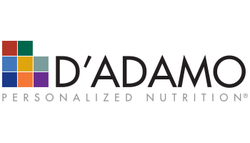
It can be a real challenge to spend time outdoors in the fall and winter months. Fewer daylight hours, and the fact that the sun stays lower in the sky in the winter, make it difficult to get enough UVB light – what our bodies need to create vitamin D.
Many people start to feel the effects of low vitamin D levels in the winter. It’s common to experience low energy, fatigue and mood changes. But a vitamin D deficiency can also lead to more frequent illnesses, muscle and joint pain and low bone density.
So how do you get enough vitamin D? And which type of vitamin D should you take? Let’s have a closer look at the “sunshine vitamin” and its three main sources – the sun, supplements and food.
The sun and vitamin D
Vitamin D has essential and wide-ranging effects throughout the body. It’s vital for the absorption of calcium, iron, magnesium and zinc. It’s also important for healthy bones and connective tissues, as well as for maintaining a robust immune system. Sunlight is our main source of vitamin D. When our skin is exposed to UVB lights from the sun, our bodies produce vitamin D.
How much time do you need to spend in the sunlight? 10-30 minutes of midday sun (without sunscreen) a few times a week is sufficient for most people. People with darker skin may need more. Of course, for many people, it’s difficult to get enough sun exposure in the winter months. That’s why they turn to supplements.
Vitamin D2 vs vitamin D3 supplements
Vitamin D supplements come in two main forms – D2 (ergocalciferol) and D3 (cholecalciforal). The main difference is that vitamin D2 comes primarily from plant sources. Vitamin D3, however, is the natural form that our bodies create from sunlight.
Because it’s less costly to produce, the D2 form is often used for multivitamin supplements and in fortified foods such as dairy products, orange juice and breakfast cereals. If your goal is to raise vitamin D levels in your blood, vitamin D3 is typically more effective.
An excellent choice in vitamin D3 supplements is Phyto D 2000. Created by Dr. Peter D’Adamo, Phyto D 2000 blends together vitamin D3 with vitamin K2 and two Chinese herbs to support healthy bone and connective tissues as well as joint flexibility.
As with all supplements, it’s important to consult with your doctor before taking vitamin D. Vitamin D deficiency can be harmful, but it is also possible to take too much.
Which foods contain vitamin D?
When it comes to vitamin D from food sources, it’s naturally present in very few foods. It is mainly found in fatty fishes, such as salmon and tuna, as well as cod liver oil and egg yolks. For people who don’t eat animal products, it’s more difficult to rely on food sources for vitamin D. Non-animal sources of vitamin D include mushrooms, spinach and soybeans.
For followers of The Blood Type Diet, it’s important to check that any particular vitamin D-containing food is right for your type. For instance, cod liver oil is an Avoid for Type O non-secretors. Using our Official Blood Type Diet App is an easy way to find out.
Fortunately, our bodies can store vitamin D in the liver and fat tissues, so vitamin D levels don’t plummet immediately when the weather gets cold. However, they can drop significantly during the winter months, which puts us at a greater risk of seasonal viruses. (Learn more about the connection between vitamin D and the immune system here.)
Phyto D 2000 can be purchased by itself or as a part of Dr. D'Adamo's Resistance Pack, which combines elderberry, quercetin, Andrographis paniculata, Chinese Skullcap Root Extract and vitamin D to provide a cornerstone of immune modifying support during the winter months, especially during these uncertain times.


